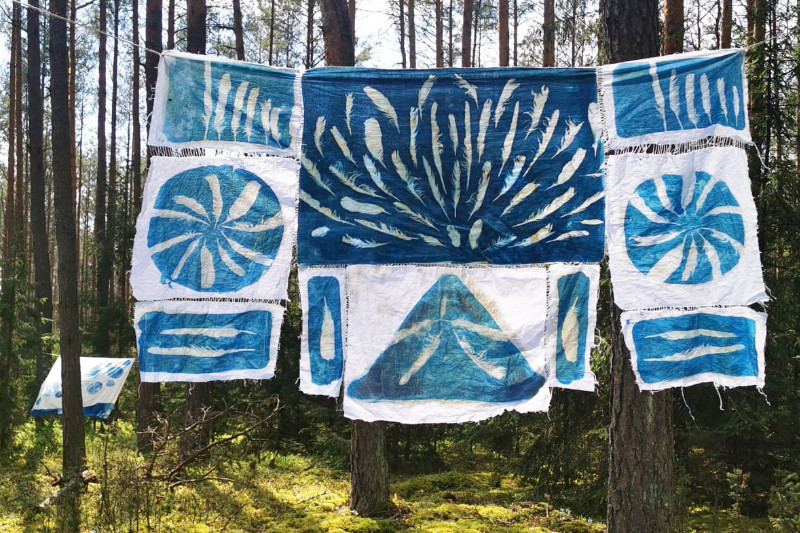The beginning of September 2023 brought the launch of an educational and artistic project entitled “Human Nature, Creative Nature – how to see ourselves and the world”, awarded in the 5th edition of the “Wena” Grant Program Competition under the motto “What’s new in art?” The students, together with lead teacher Ewa Skłodowska, posed themselves and the audience important questions.
How do we see the world?
We live in a dynamic and changing reality that is full of viewing patterns and based on an aesthetic approach. Visual culture determines how we are supposed to see the world and ourselves. Things, facts and events are not defined by nature, but by human perception and language, which often frames and misrepresents the reality. The thought patterns available to the “western mind”, which is inextricably linked to the academic and scientific method of research, define only what can be named, written down or proven. They fill the world with meaning based on what we know about it. Alan W. Watts calls this approach “message coding”.
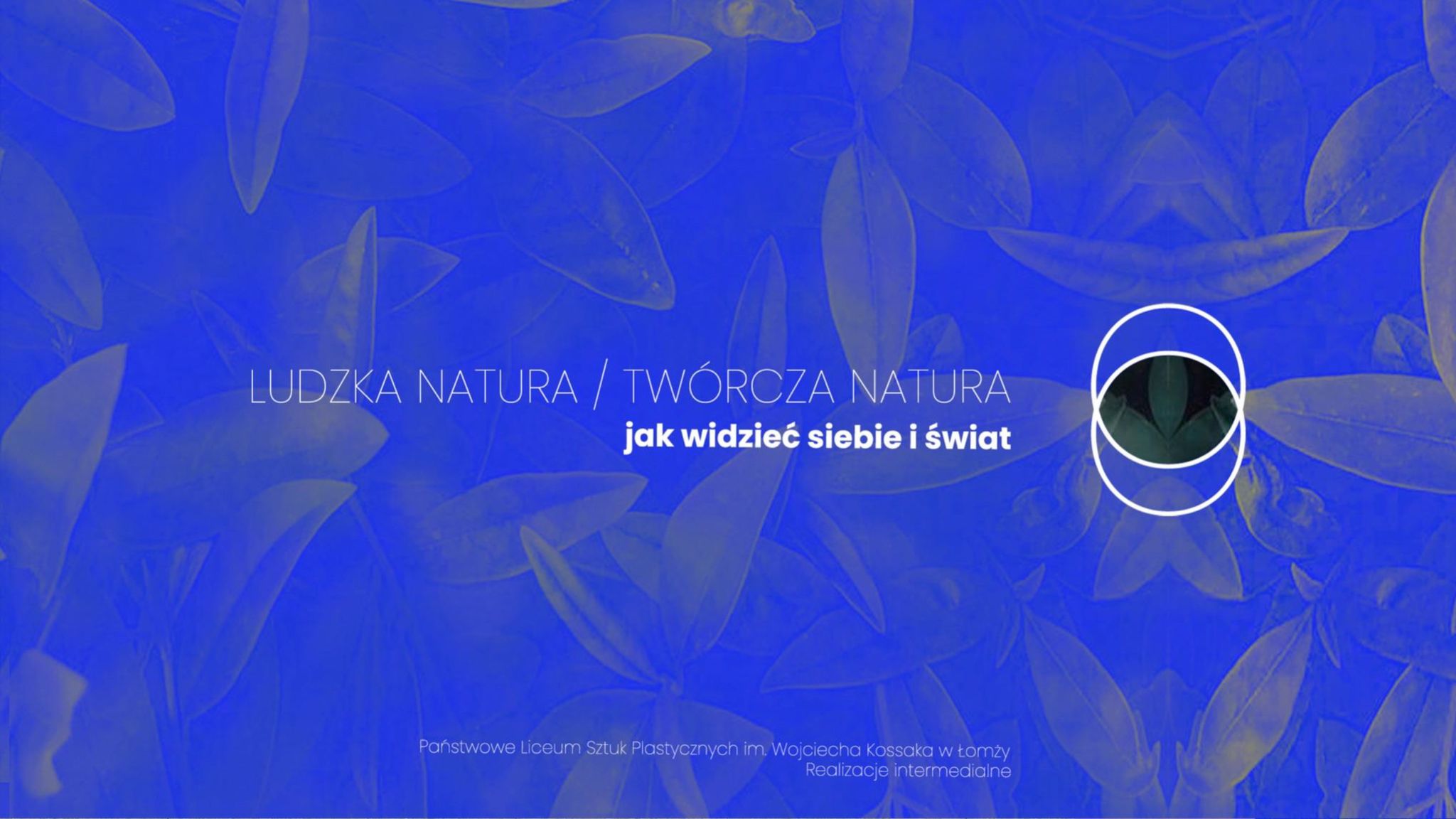
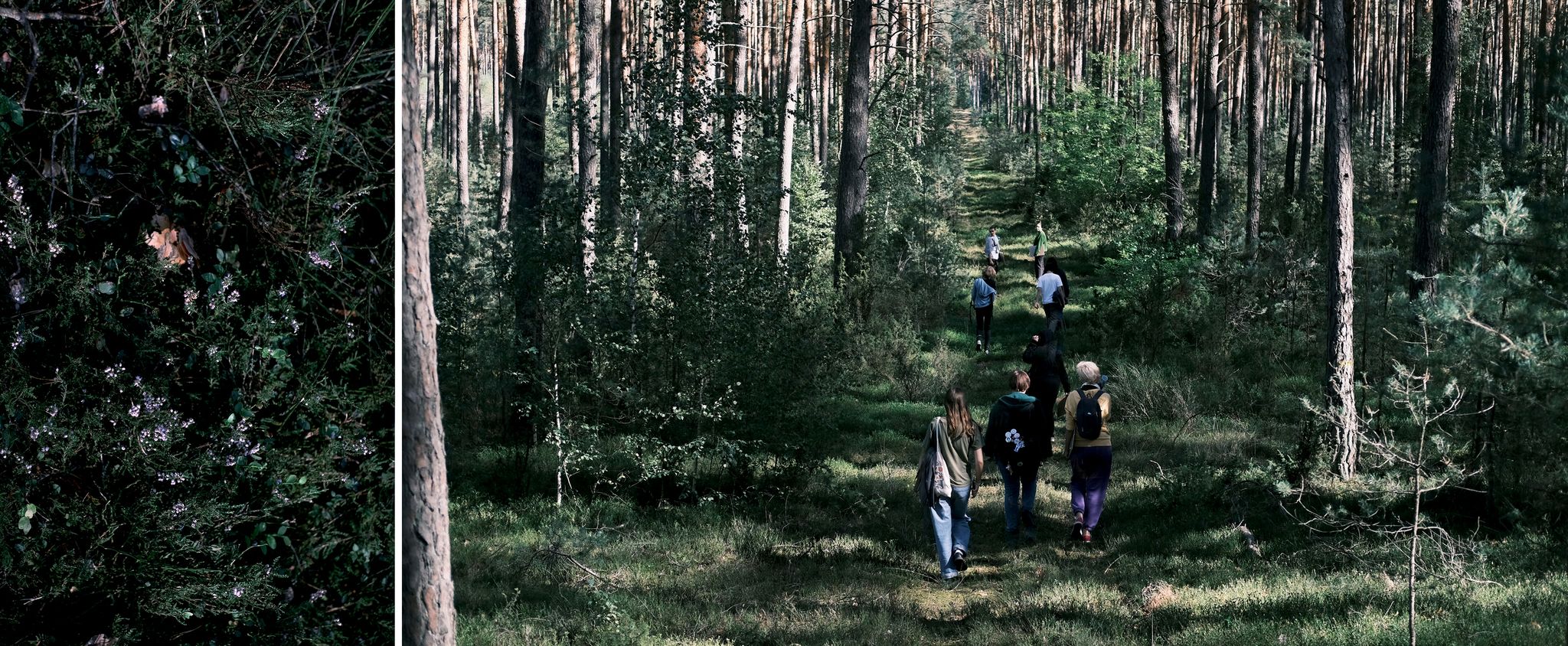
Another phenomenon we are seeing is the development of technology, which has facilitated overproduction of images, especially pictures presenting our own likeness, pictures of places or events. After all, artificial intelligence can in no time generate images that mimic any artist's style or create a photograph that is hardly distinguishable from reality. In 2023, an algorithm-generated photo won the Sony Word Photography Award in the open creative category. Its creator Boris Eldagsen refused the award, raising questions about what is the essence of creation and the creator.
Here, Nicholas Mirzoeff’s idea also comes to mind – modern life is lived on a screen and through it we see ourselves. We see ourselves through phone screens and watch modified images generated by artificial intelligence.
As creators, we pose questions:
- How to see anew?
- What to look at?
- How to look and not just see?
- How to stop this kaleidoscope of images and get back to the nature of creation?
- Where to look for inspiration of creative nature?
- How to see without processing through algorithms, programs, apps?
- What can we see ourselves in?
These questions bring to mind the symbolism of the mirror as an object in which we can see ourselves.
"The mirror is completely devoid of ego and mind. When a flower appears, it reflects the flower; when a bird appears, it reflects the bird. It presents a beautiful object as beautiful and an ugly one – as ugly. Everything appears as it truly is. The mirror intrinsically lacks a discriminating mind or self-awareness. When something appears, the mirror shows the reflection; when an object disappears, it allows it to vanish without a trace” – writes Ewa Skłodowska.
The essence of the mirror is therefore the lack of classification or judgement of what is beautiful and what is ugly – it beholds reality with a conscious, non-judgmental eye; it simply perceives, notes the space.
Attempts to create a means of artistic expression that corresponds to the idea of a mirror can be seen in the photogram or cyanotype technique.
The goal of the project was to observe nature in its processes of creation. The effort involved the production of art installations imbued and associated with the area of the Kurpie Forest, stretching in the immediate vicinity. To this end, the young people wandered in search of inspiring locales described by Adam Chętnik in his 1932 work.
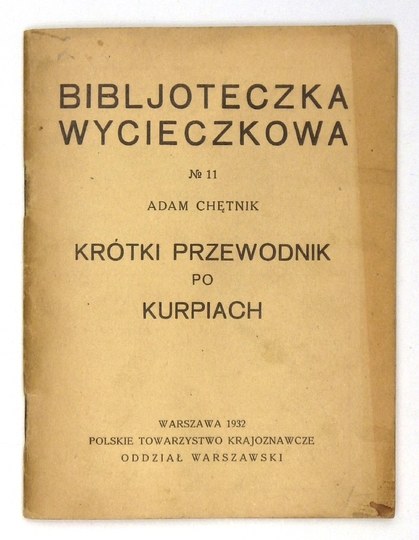
At the heart of this quest was a literal journey, which inspired a dialogue on the artistic process and journey. In their artistic creative act, following the laws of nature, the students explored and captured images of the fauna and flora of the areas surrounding the Pisa and Narew rivers.
They utilised a variety of media: cyanotype, schlagmetal gilding and plates (transparent films), on which drawing commentaries could be added later on. With the aid of these techniques, the elements of nature such as: pines, spruces, oaks, larches, birches, yews, alders, ferns, grasses, herbs, berries, mosses, sorrel and common meadow-grass were exposed by sunlight onto stones or the trunks of felled, old trees. The activities enabled the young artists to reflect on the place where they had been creating and spawned pieces of work that have become an integral part of a given location.
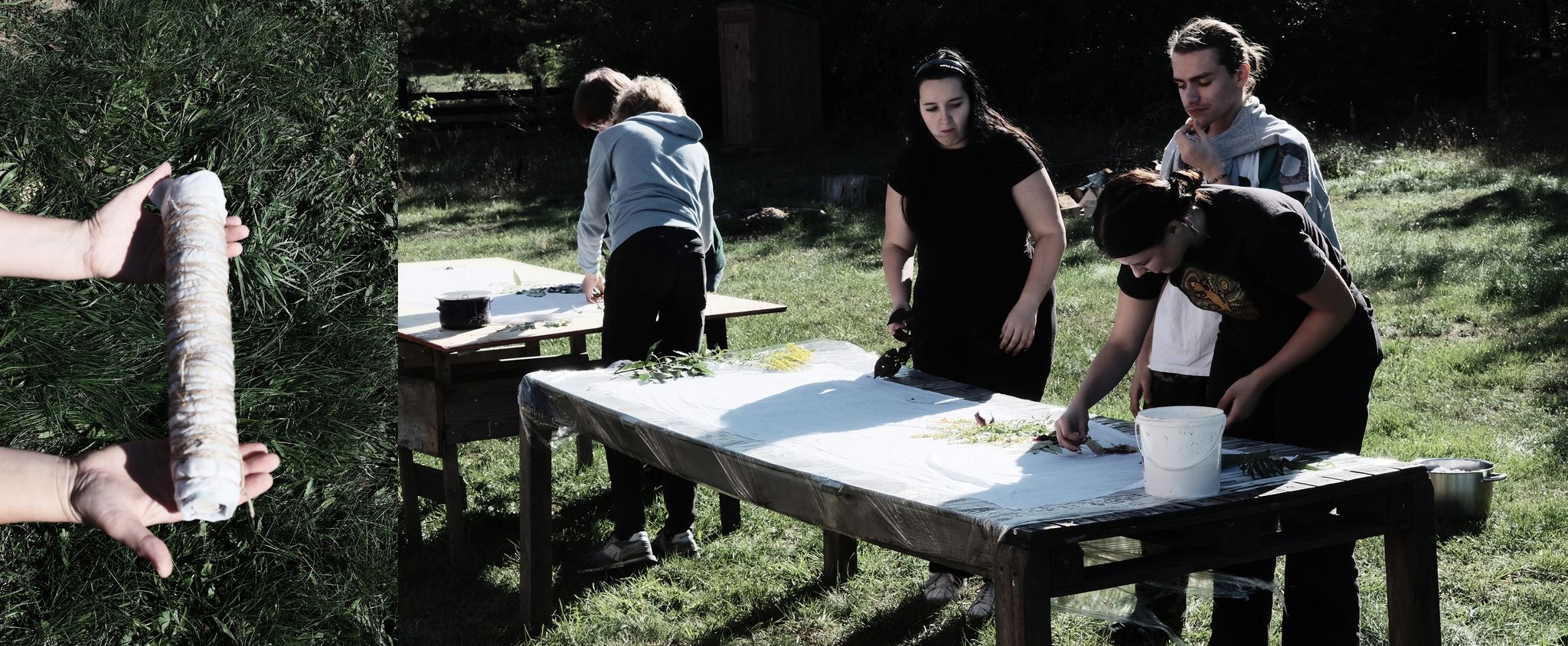
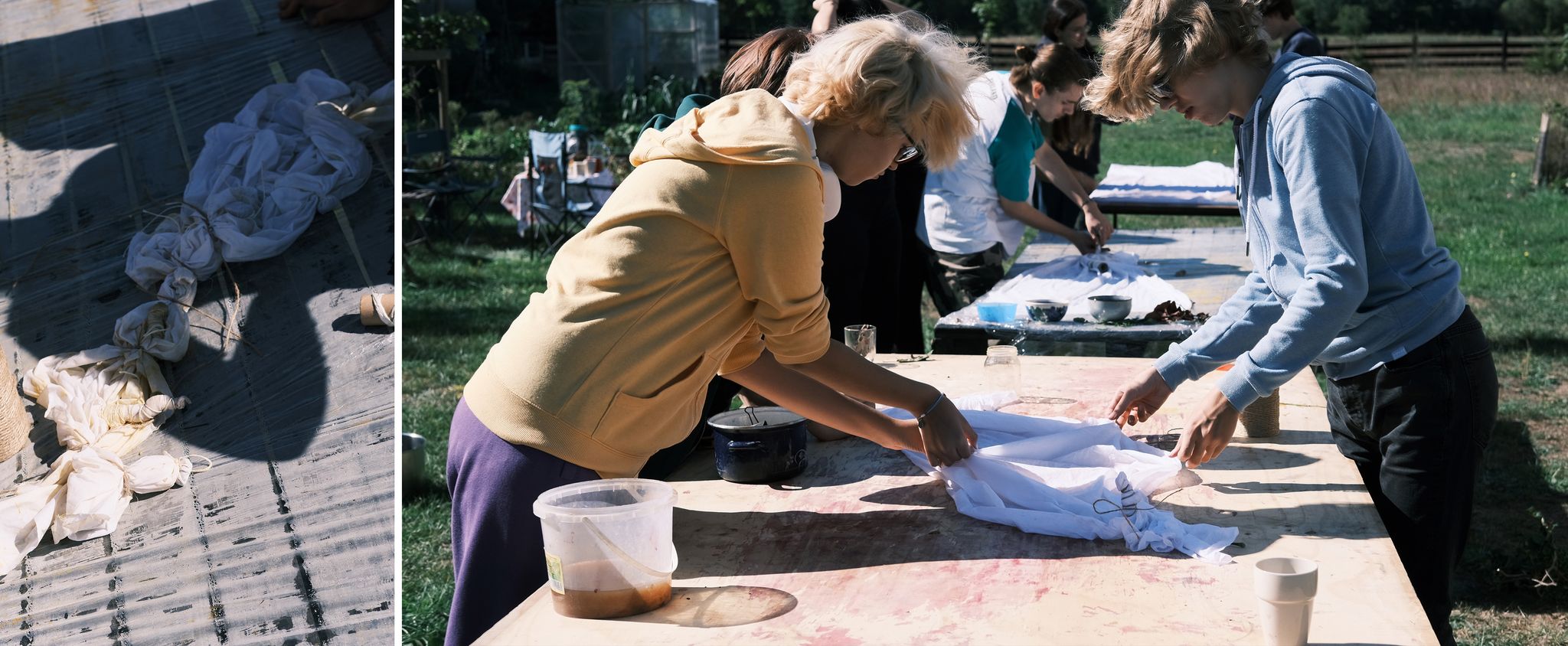
The works on display are an intimate portrait of the state of the Kurpie Forest, capturing the incredible diversity of the landscape, as well as the changes it is undergoing. They are also an example of the author and nature working together to create a piece where conception, but also chance, play an important role.
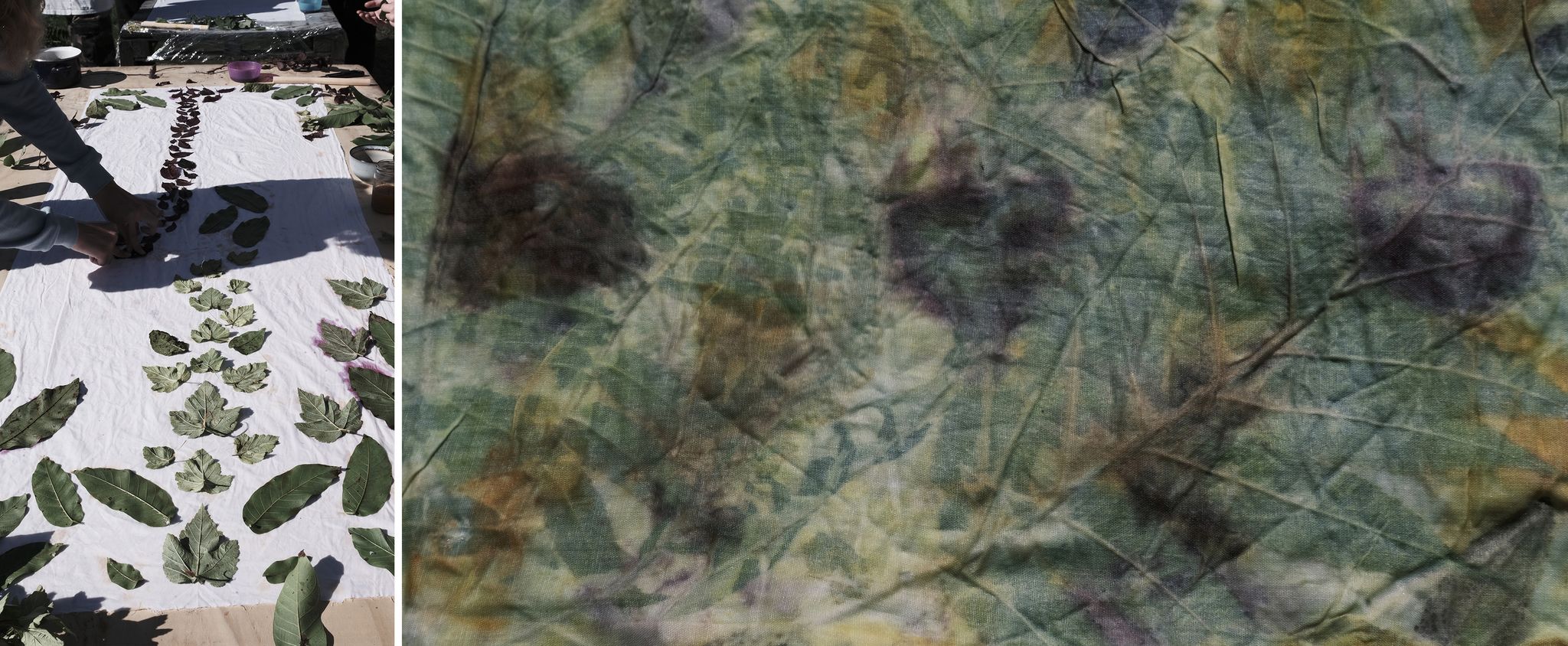
The result is a map with marked spots where the works, incorporated into the landscape, can be viewed. Exposed to natural weather conditions, they undergo natural decay, serving as a reflection on transience. The most important aspect of this artistic journey through the Kurpie Forest was the creative process itself, i.e. the path, and not the destination.
“Our endeavours are co-created with nature – there is no modern technology or artificial intelligence involved. The creator reflects reality, not copies it. He composes and arranges without resorting to algorithms. He celebrates the creative process, not just the end result. To see a piece of work, you have to come to the wilderness; it cannot be fully experienced though virtual media. Our efforts and creations will decay naturally. The work exists in the flesh, not just virtually. The artist asks questions, does not give answers – he opens himself up to discussion. Our project is an artistic journey” – Ewa Skłodowska describes the project.
The choice of route was inspired by research into the Green Kurpie region and the “Expedition Library” book by Adam Chętnik, a Polish ethnographer, museologist, social and political activist, enthusiast and researcher of Kurpie culture, author of books devoted to the Kurpie Forest region, founder of the Kurpie Open Air Museum in Nowogród. His scientific oeuvre includes more than 100 papers.
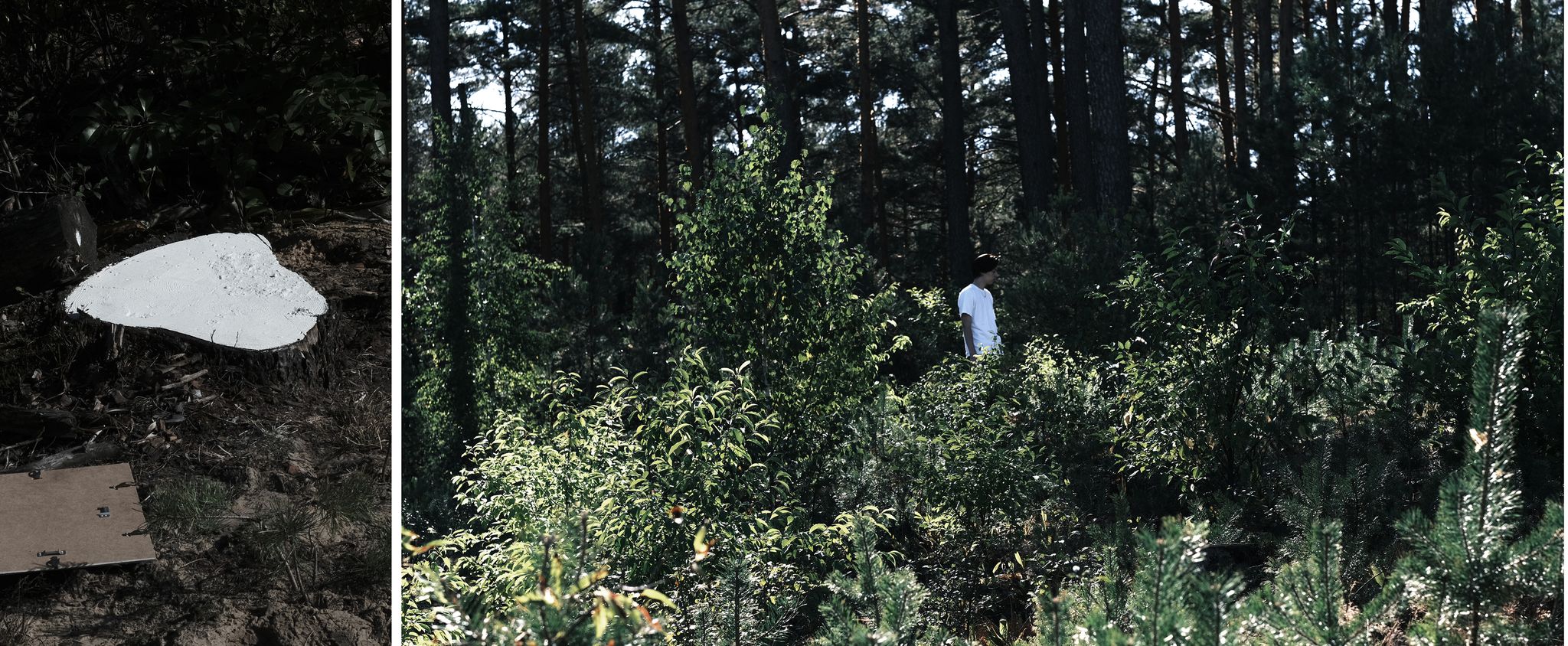
Plein-air art project in the Kurpie Forest
The result will be a map with coordinates of the works. Unlike the Internet-oriented art, a field exhibition does not turn the viewer passive; it is unique and changes from moment to moment. The pieces will be displayed in hard-to-access areas. You have to hurry to see them as, exposed to weather conditions, the pieces will look different every day, until they completely disintegrate. The Internet and the media make us believe that information and images can be held in perpetuity and we can always go back to them.
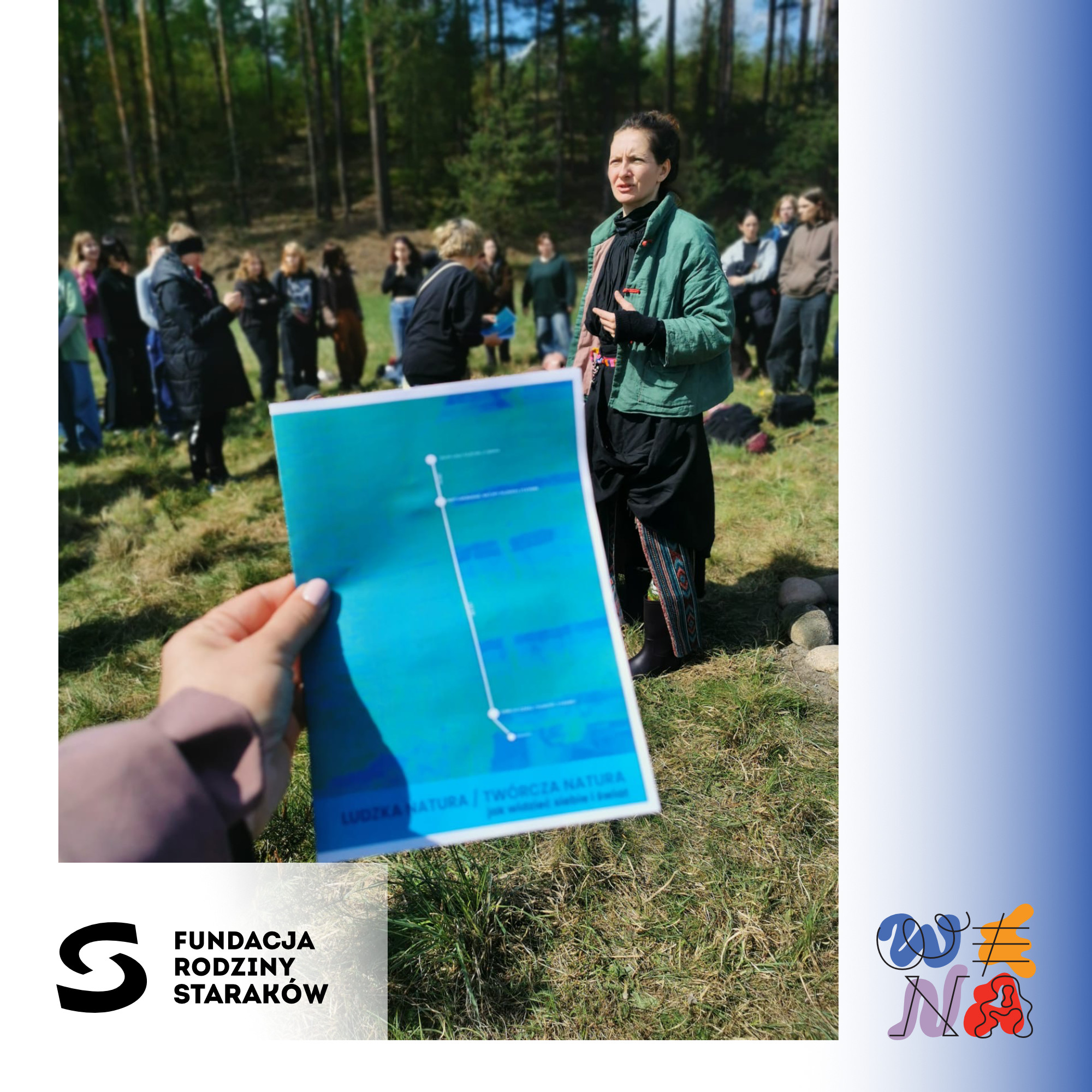
Map with coordinates of the works
In an era of a rampant digital revolution, programmes, infinite possibilities of the Internet, artificial intelligence – a return to endeavours that are co-created with nature, where the artist opens himself to discussion and reflection, asks questions while not giving answers, composes without using algorithms, reflects reality not copies it.
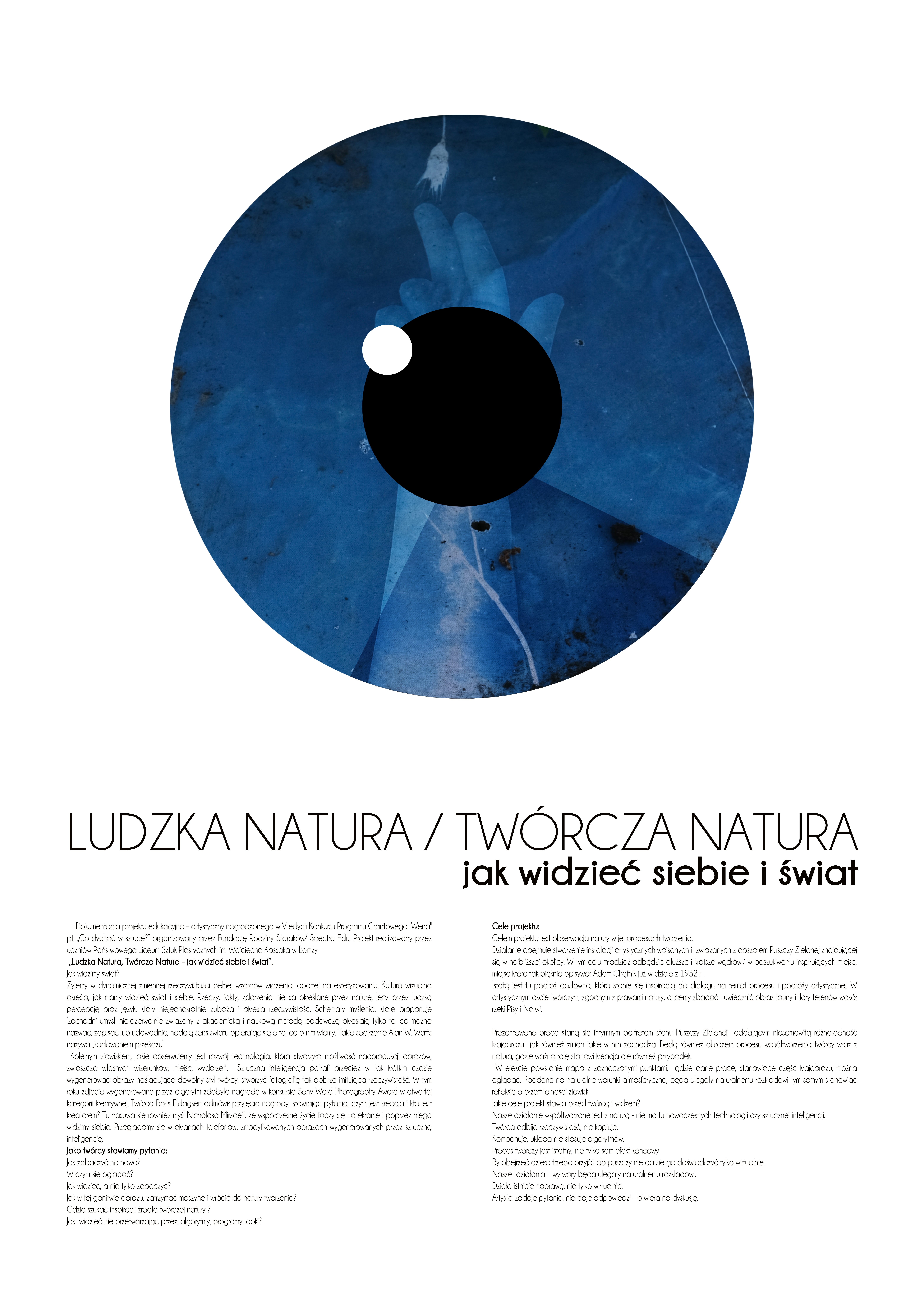
Project poster
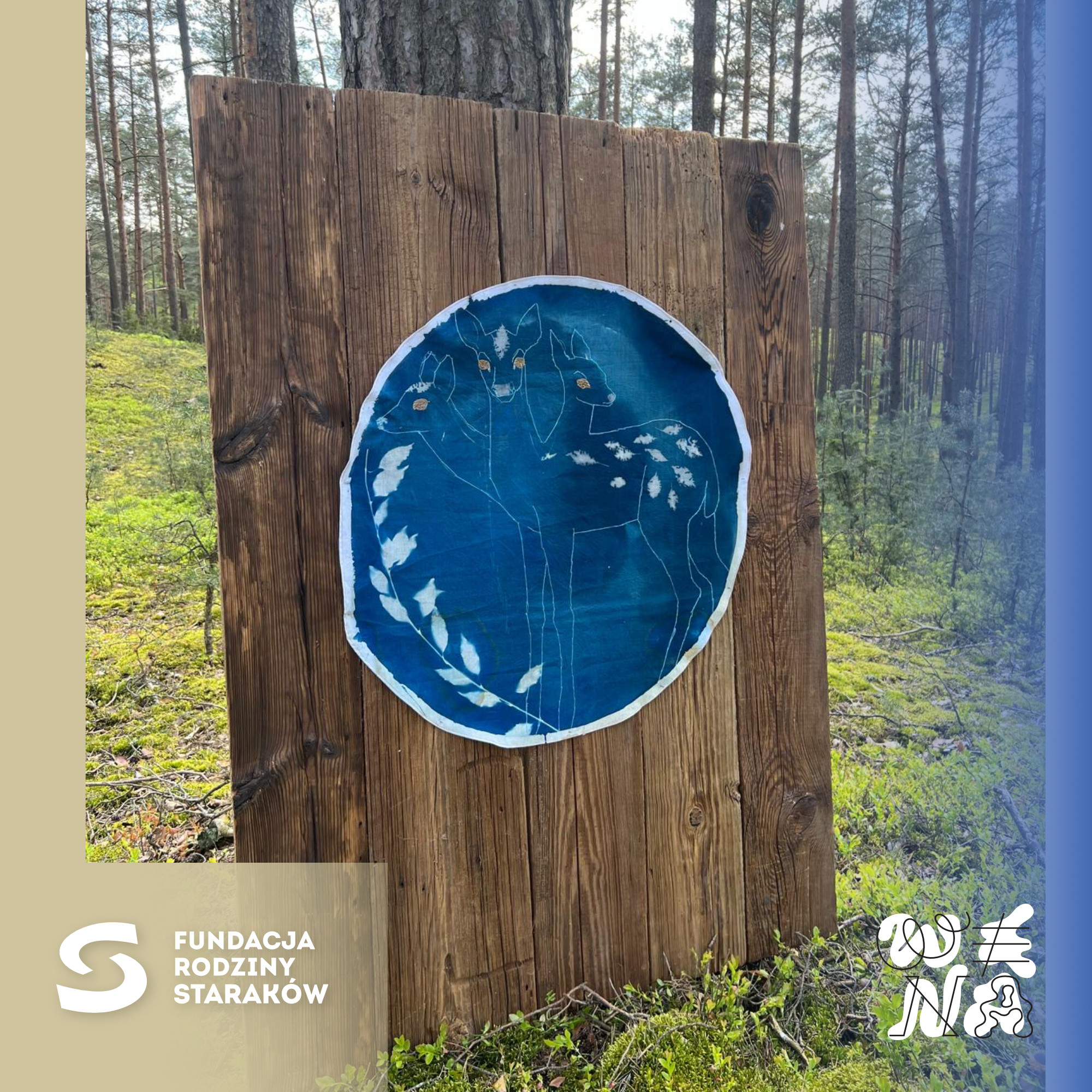
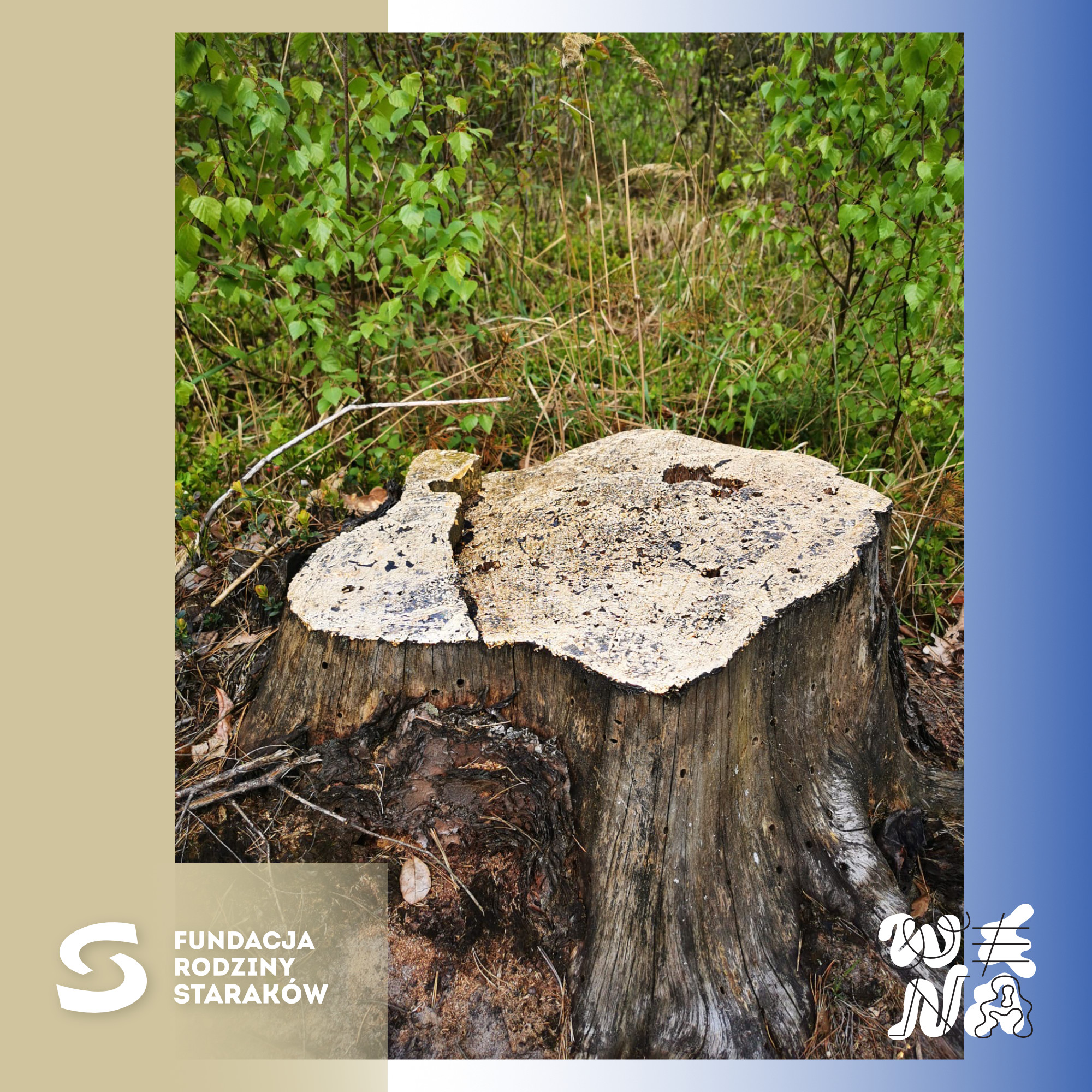
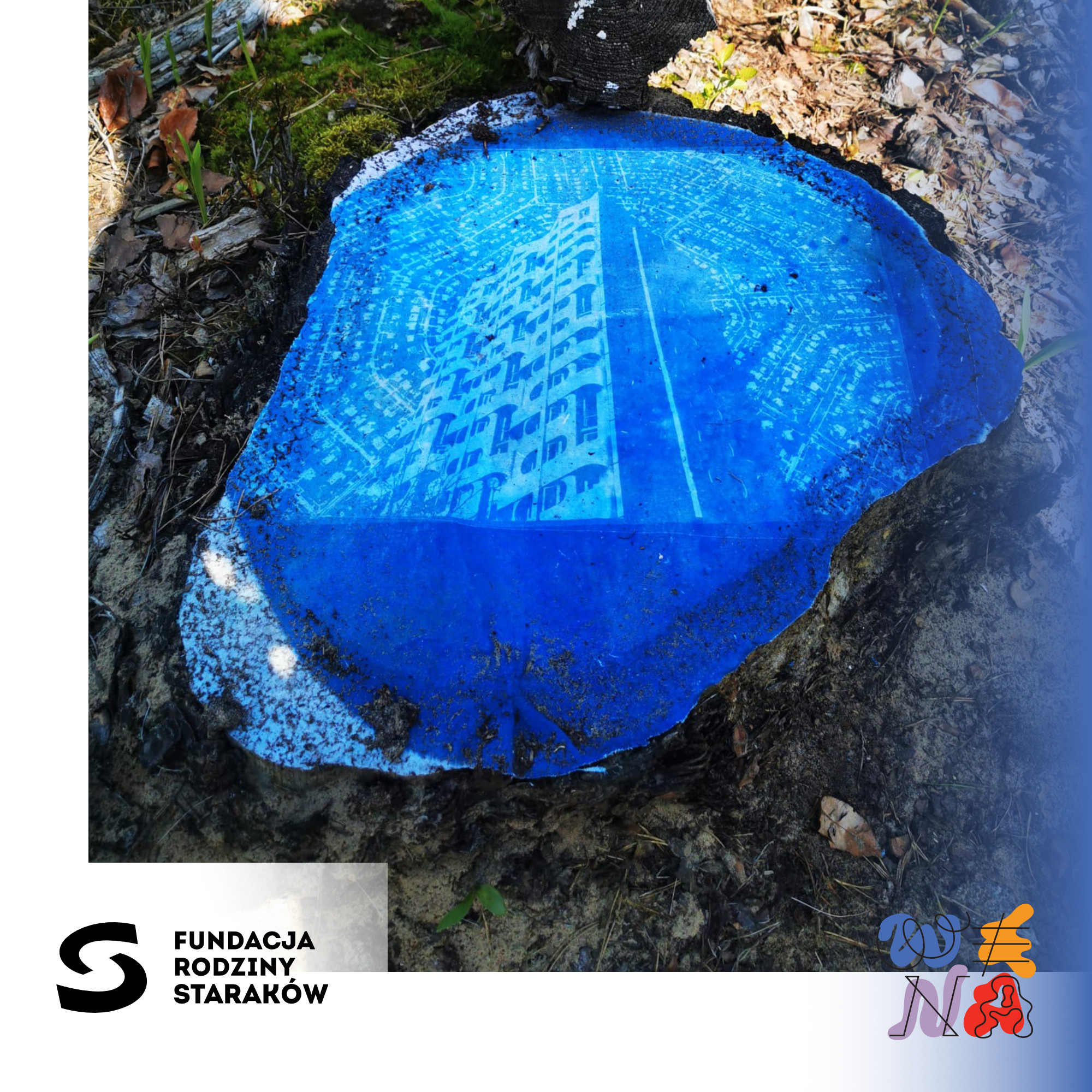
The students turned the forest into an art gallery and created a unique exhibition space.
“Thanks to the thoughtfully-crafted dramaturgy of the exhibition, we as viewers were able to immerse ourselves in the Kurpie Forest and unveil subsequent chapters of the exhibition, which centres around cyanotypes, textiles, gilded flakes, as well as the human voice” – says Sebastian Cichocki, curator of the Museum of Modern Art in Warsaw, member of the Competition Jury of the “Wena” Grant Program.
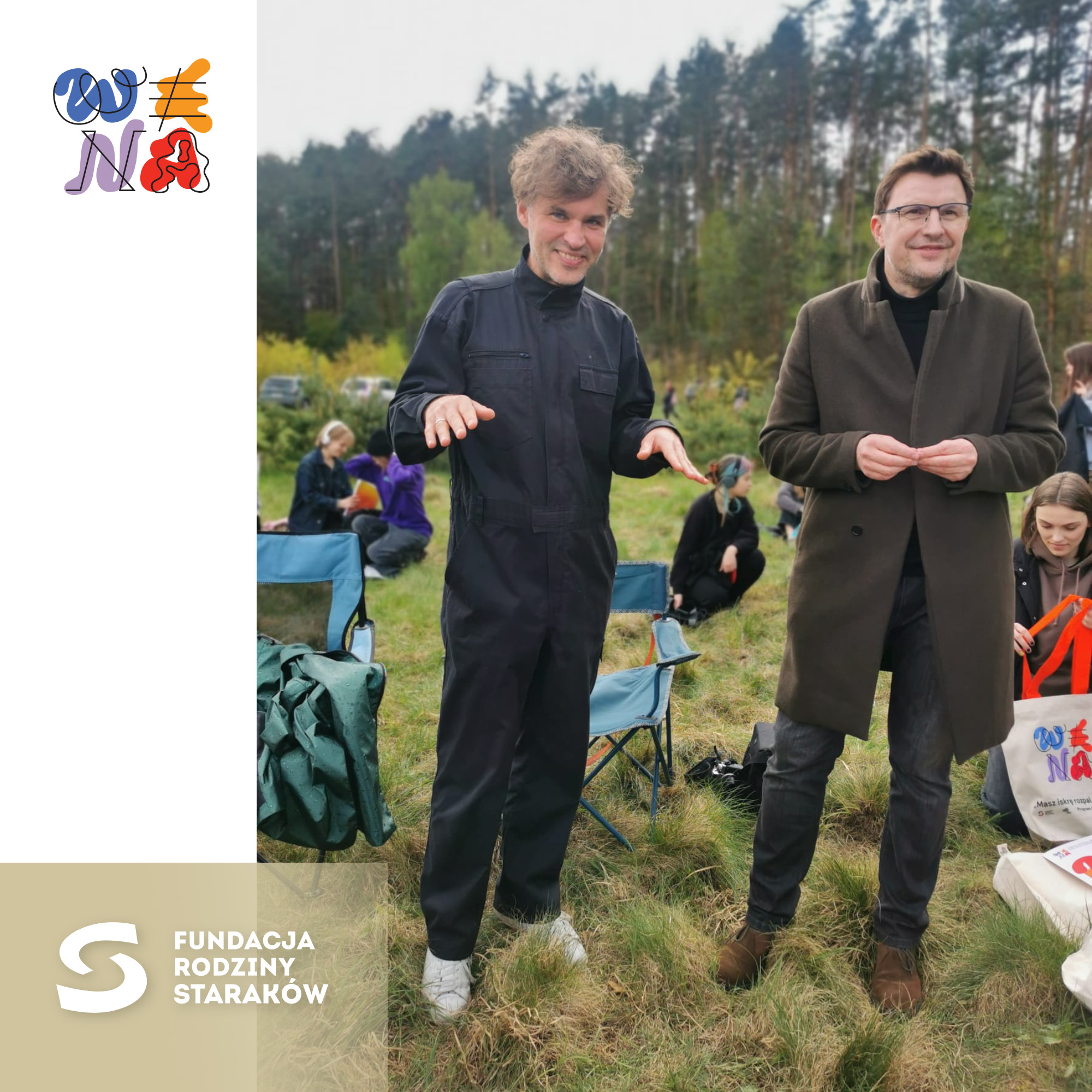
From the left: Sebastian Cichocki and prof. Tomasz Milanowski
Aware of new technologies and the ease of virtual access to art, students expressed the need for a different kind of creativity and contact with art. They delved into what they don’t have, what they lack in their everyday lives. Observing the wilderness’ natural processes, the students followed them and, in full symbiosis with nature, created a portrait of the Kurpie Forest in an outdoor gallery.
As prof. Tomasz Milanowski, Dean of the Faculty of Painting at the Academy of Fine Arts in Warsaw, member of the of the Competition Jury of the “Wena” Grant Program stressed, the teamwork influenced the quality of the resulting art and brought out its unique depth. The art was displayed with the accompaniment of white singing by artists Joanna Skowrońska and Joanna Gancarczyk, who had been singing and documenting traditional songs in Poland for years.
19 students from grades 3 and 4 participated in the project: Zofia Horosz, Jan Bienias, Julia Chrzanowska, Wiktoria Cieśnicka, Oliwia Dmochowska, Adrianna Duchnowska, Aleksandra Filochowska, Zuzanna Klemczak, Jan Majewski, Gabriela Malesa, Weronika Mróz, Patrycja Pieńkowska, Viktoriia Piuro, Błażej Rafałowski, Michał Szymański, Wiktoria Świątkowska, Elżbieta Tafelska, Maria Wiśniewska, Katarzyna Załuska.
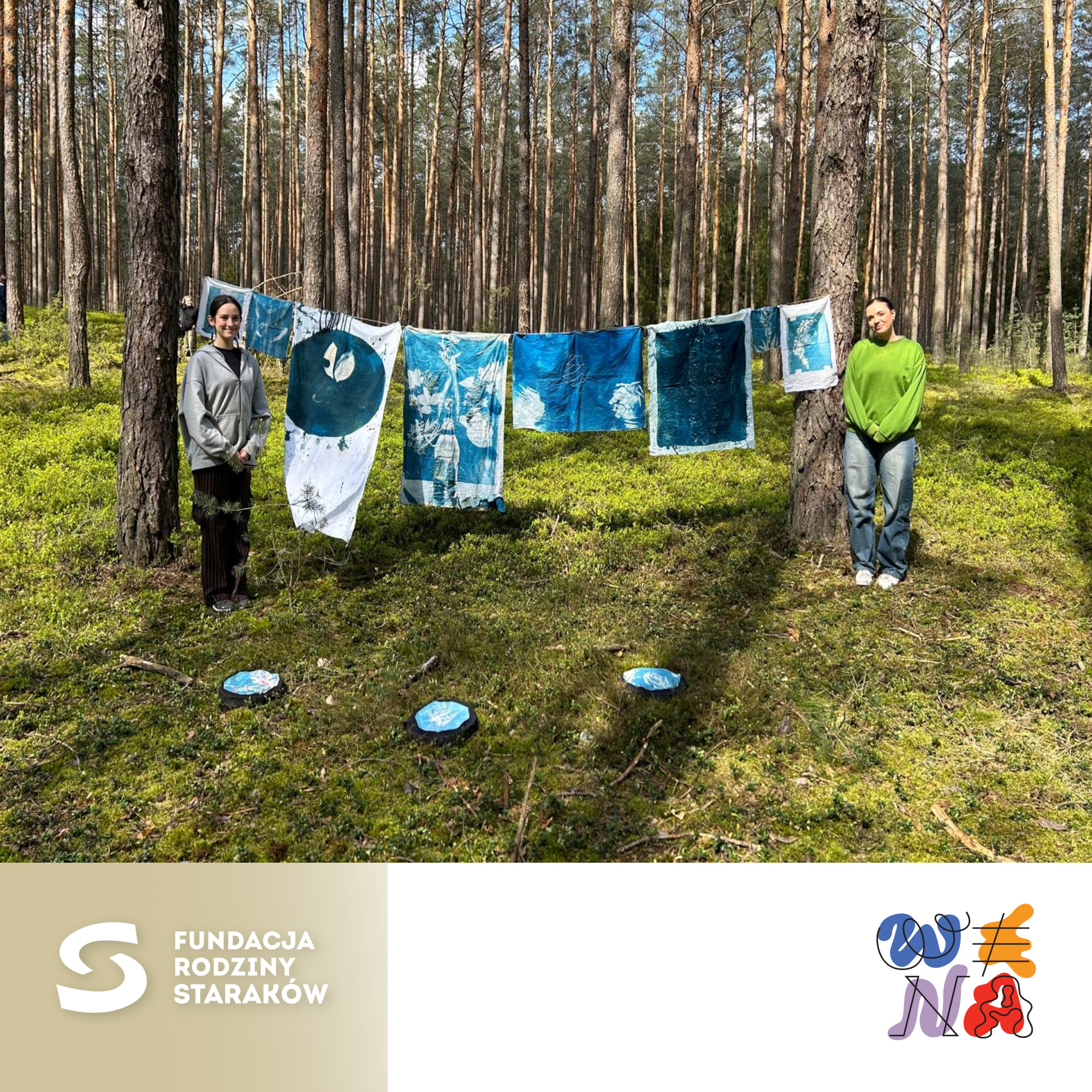
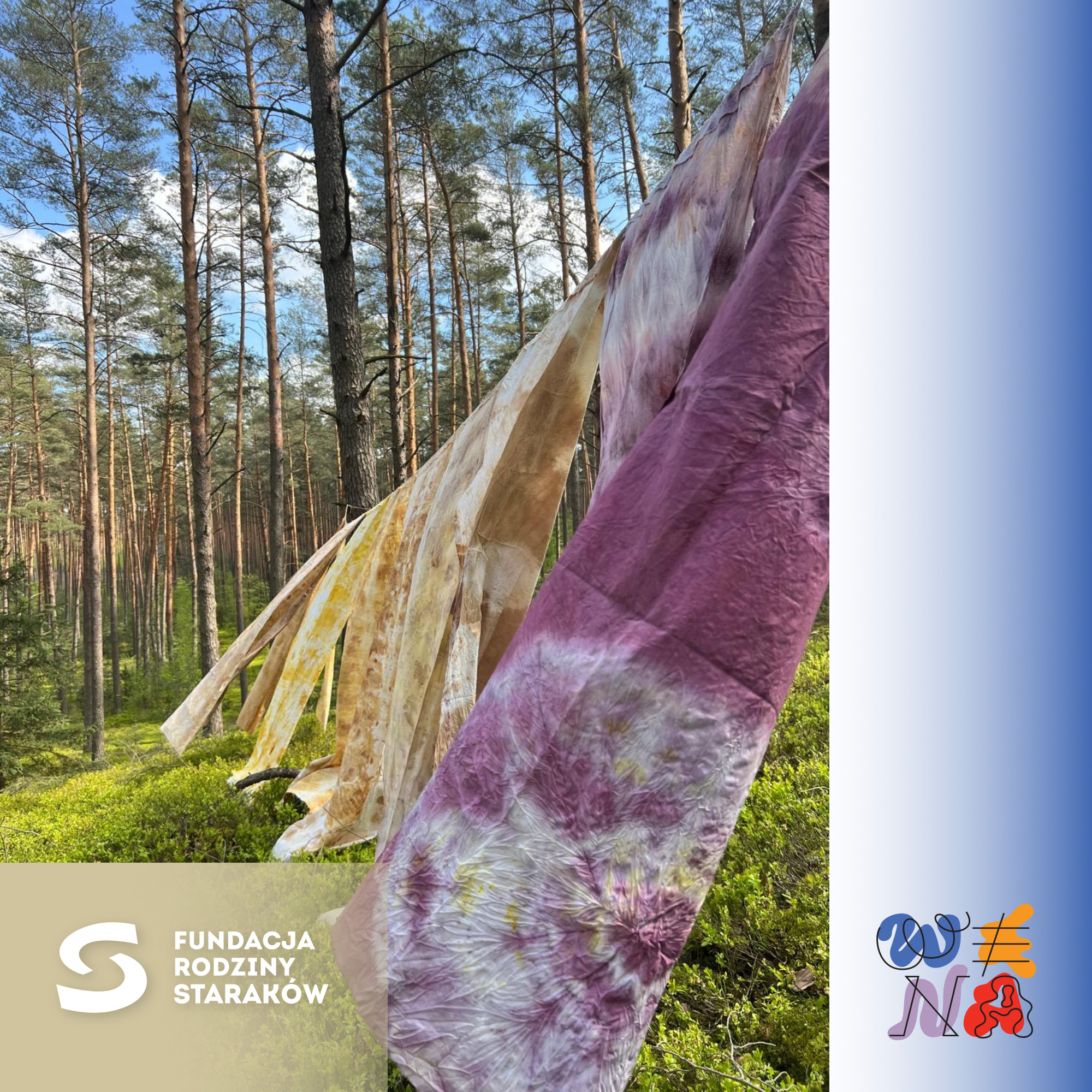
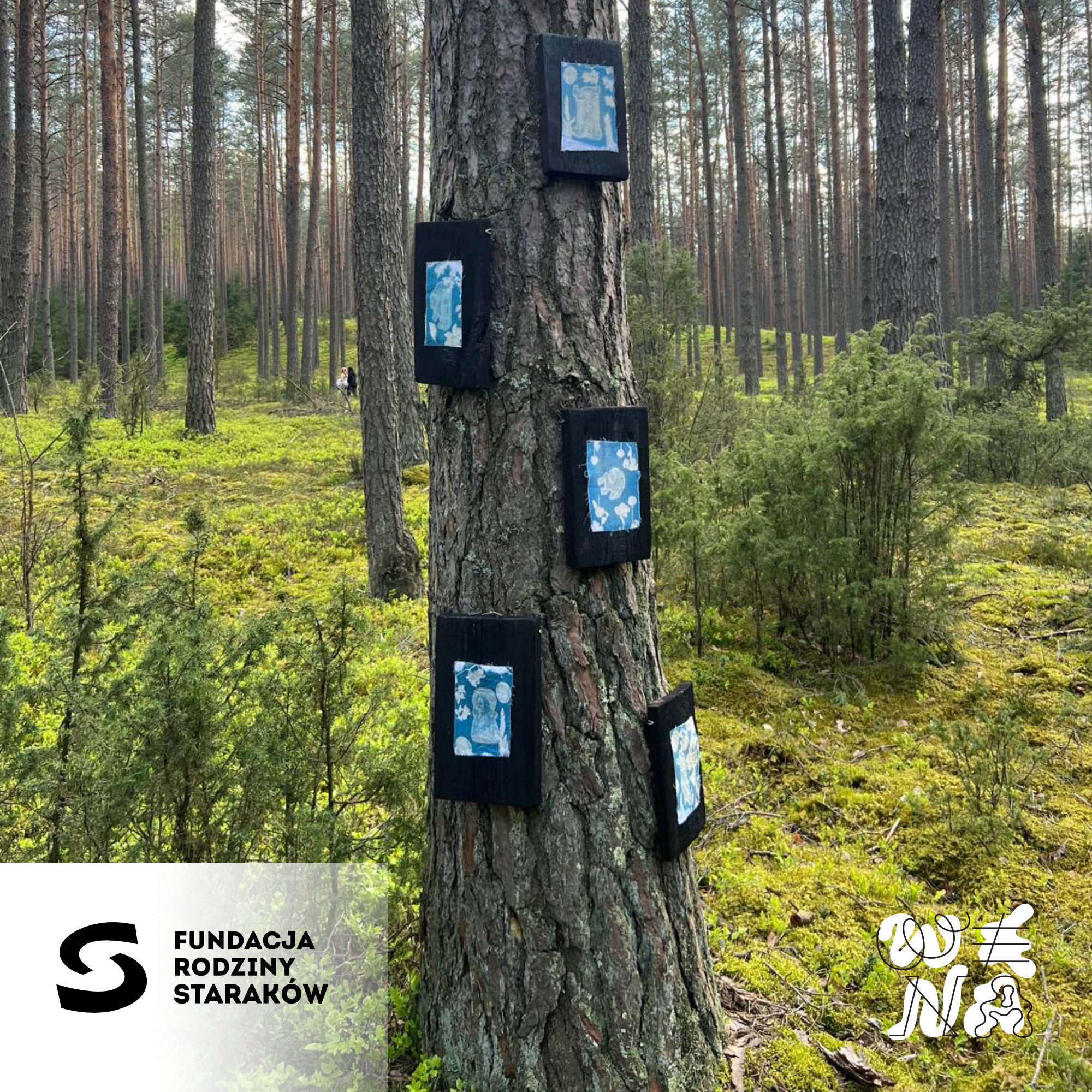
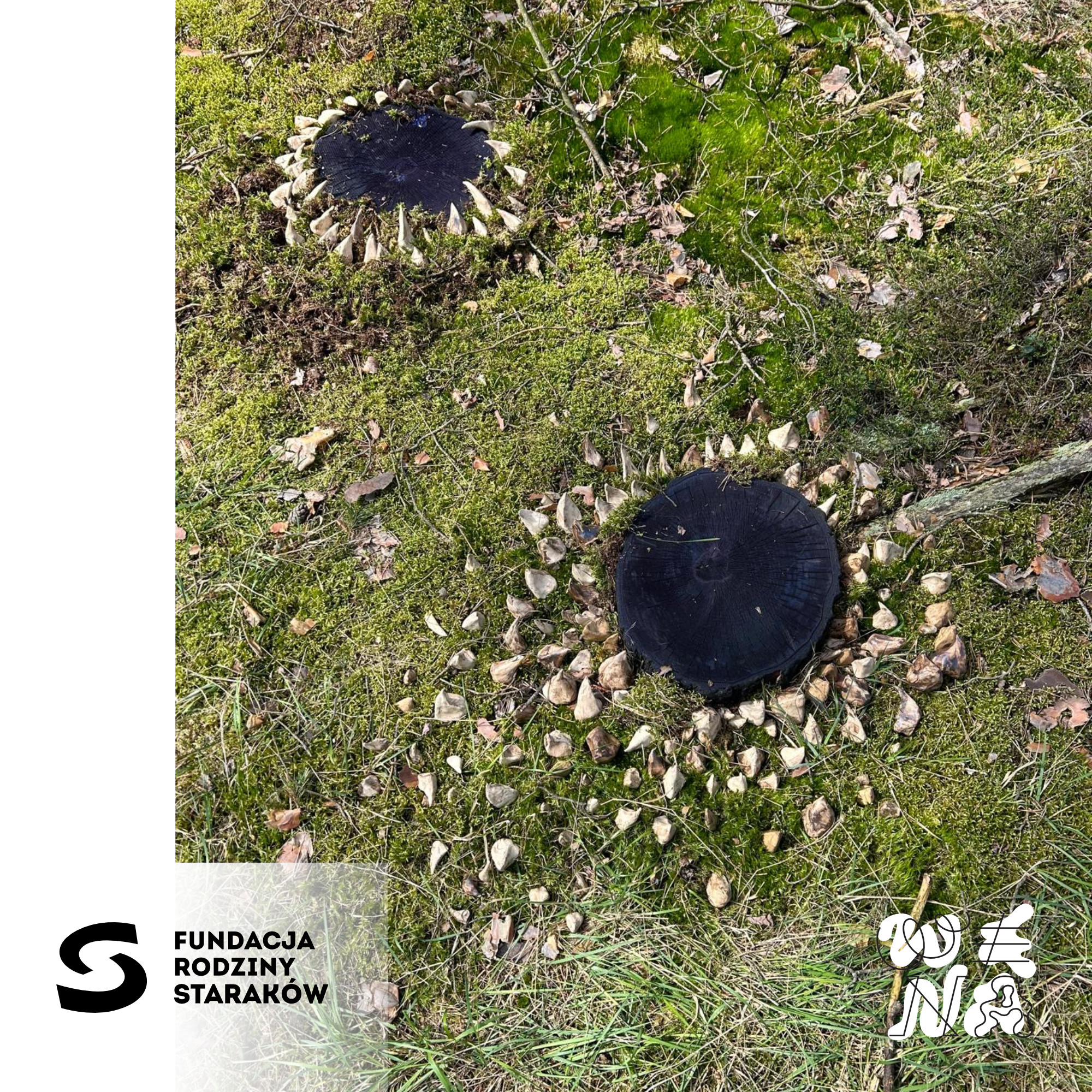
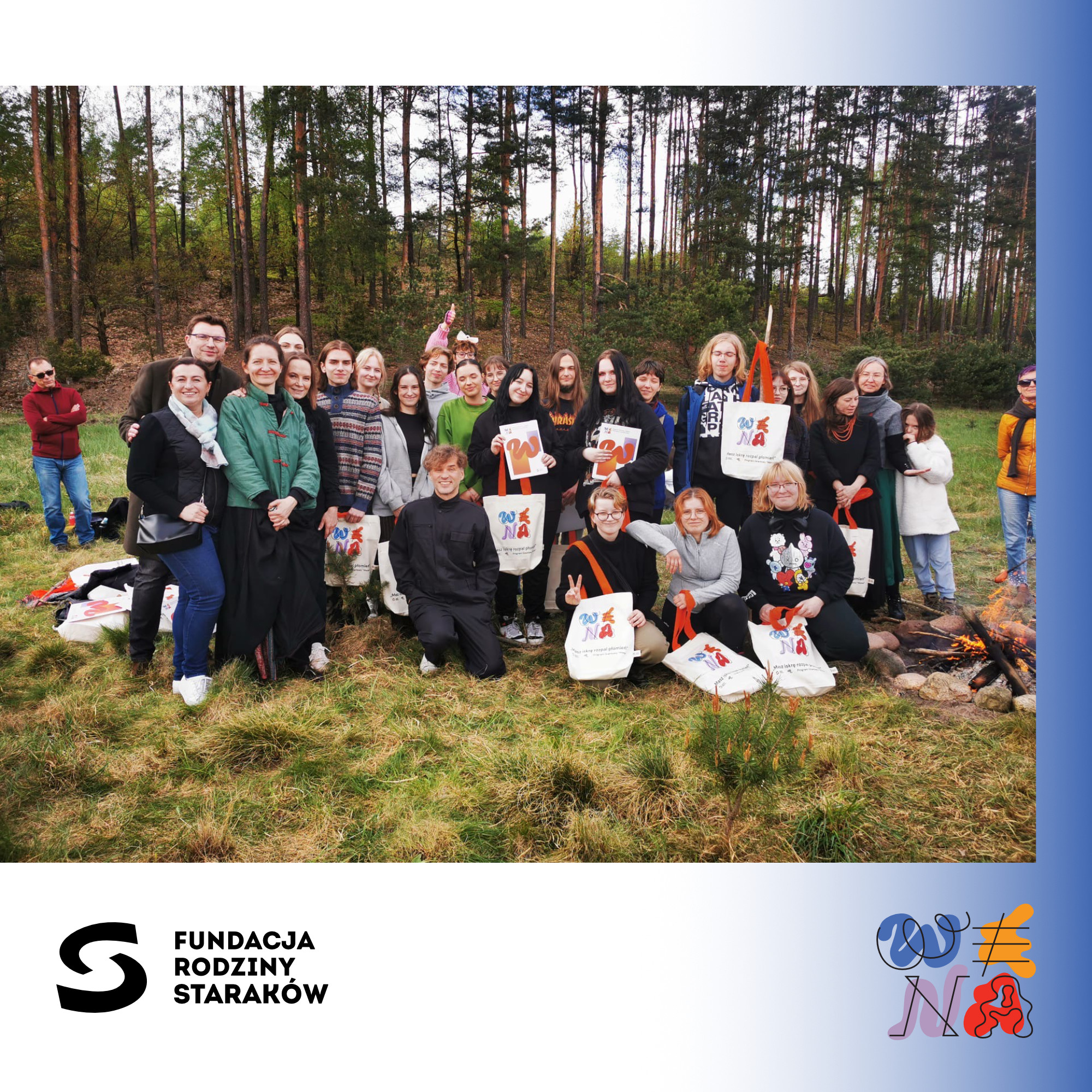
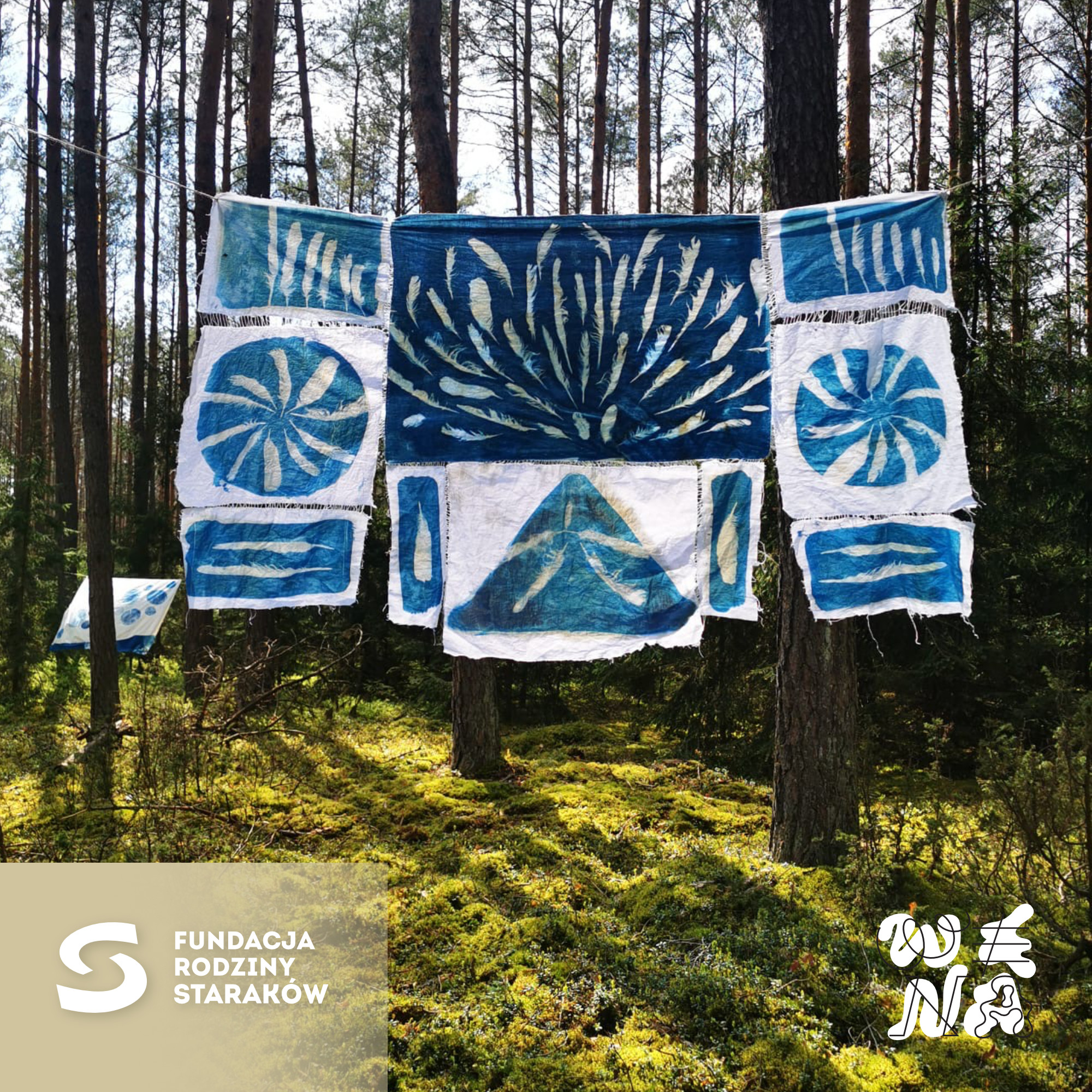
Our heartfelt congratulations and appreciation go to the heart of the project, i.e. Ewa Skłodowska, the teacher who guided the young people throughout the implementation process. In a discussion with Wiesława Giedrojć, the students emphasised that they had been initially lost and felt creative malaise. But Ms Ewa had gradually, in a calm and patient manner, guided them and opened up their dormant layers of creativity. The entire project team was strongly supported by Gabriela Horosz, deputy artistic director.
We returned from Łomża remembering the image of gleeful faces of fulfilled young artists, the beautiful nature of the Kurpie region, and still hearing the unique native music of Podlasie.
Impressed by the outcome of the project in the Kurpie Forest, we immediately suggested that the project team prepare an exhibition in the patio space of an office building in Warsaw's Mokotów district.
The exhibition featured dyed textiles, paintings on woodchips and a video showing the results of the original project and the art school students’ sensitivity to the vision of nature in its creative processes. The wholeness of the work was completed by the reflections of blue sky in the office building windows, which resonated with the works created using the cyanotype technique.
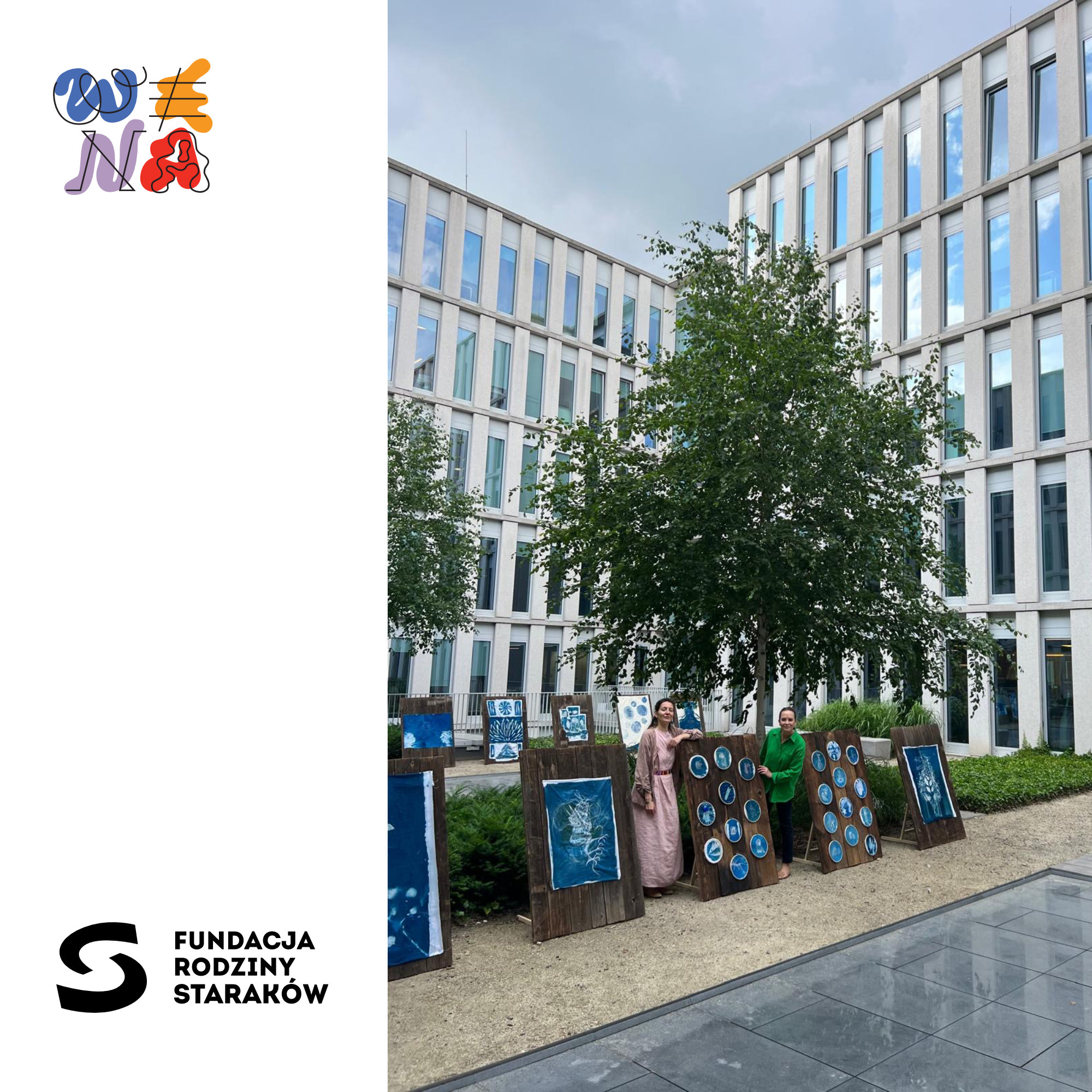
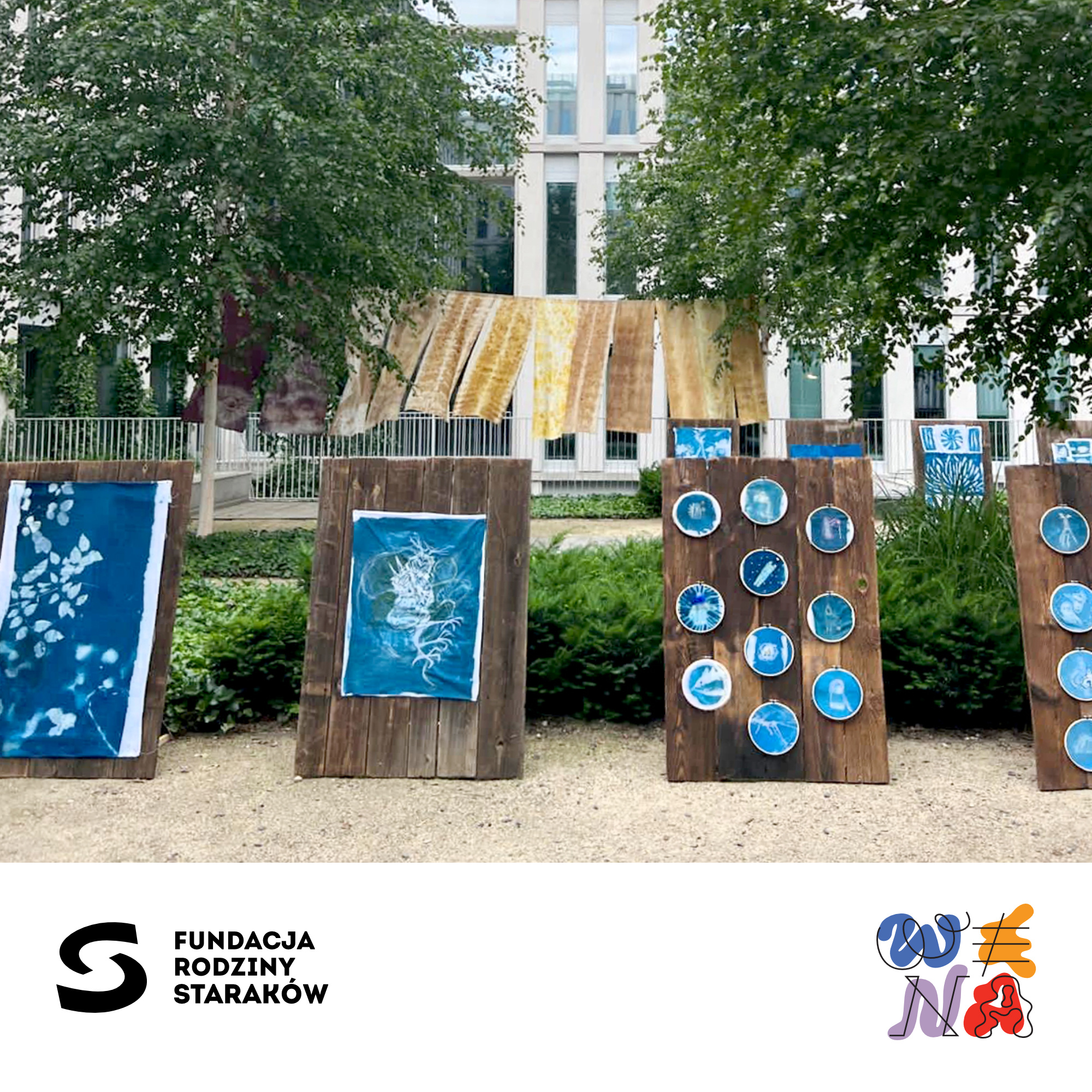
A few days after the project conclusion, Ewa Skłodowska shared a profound reflection on social media.
“I have already rested a bit. And I would like to share my thoughts on the event – the project finale, awarded in the 5th edition of the Starak Family Foundation’s "Wena" Grant Program Competition, entitled: “What’s new in art?”. Art has many functions and manifests itself in a variety of ways, and each of them is valid.
Our project celebrated experience. Going along a certain path. Partaking in a process, a ritual to which we are invited. Everything that is articulated through the intellect can be separated and named: image, nature, sound, path, viewer, creator, installation, object... But not this time. Our idea was to create a shared and single experience. Both individual and collective. In which boundaries are blurred and which is co-created by the viewers, through their presence, emotions, sensations.
This was possible thanks to a group of amazing young people. They are simply beautiful young people, full of commitment, open to acting, creation, experimentation, experience, joy. I greatly appreciate your teamwork, but I also see the contribution, the commitment and the heart of each of you individually.
Many thanks to Gabriela Horosz for her help. I could count on her from my first attempt at individual research in the forest, where my car got stuck in mud at night. This is where I first cursed to myself: “Great, I'm about to stay here and no one will find me. That's how I'll finish the project, even though it hasn't even properly started”. Gabrysia and her husband found me and together we somehow managed to get the car out of the mud. After that, I received a lot of help and collegial support. Thank you.
I would also like to thank Ula Sępkowska – for helping us hang the works for display in the forest, and Adam Tymiński – for being where I was no longer physically able to be. I also thank Wiesława Giedrojć of the Starak Family Foundation for her kind words and presence. I wish the youth many more beautiful experiences in their creative career.”
LEAD TEACHER
Ewa Skłodowska, teacher of intermedia performance.
